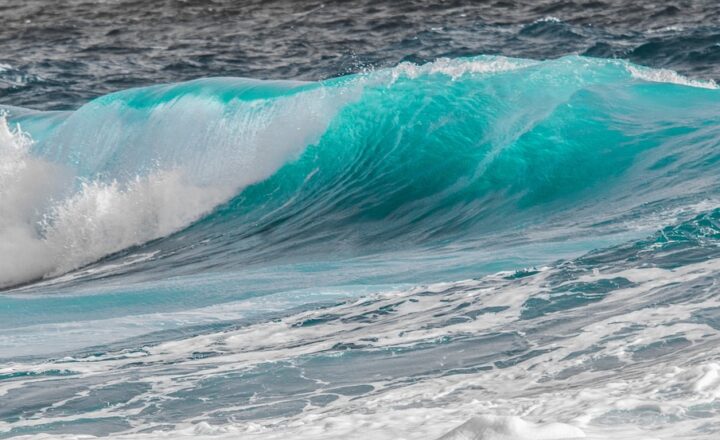Exploring Deep Ocean Trenches and the Unique Life Found Within Them
November 15, 2024

The ocean, covering more than 70% of our planet, remains one of the most mysterious frontiers of exploration. Among its many depths, ocean trenches represent the deepest and least explored regions. Scientists have long been fascinated by these extraordinary landscapes that plunge into darkness, revealing unique ecosystems teeming with life forms that have adapted to extreme conditions. In this article, we will delve into what ocean trenches are, their significance, and the incredible organisms that inhabit these abyssal realms.
1. Understanding Ocean Trenches: What Are They?
Ocean trenches are long, narrow depressions in the ocean floor, forming the deepest parts of the ocean. These geological formations are primarily created by the process of subduction, where one tectonic plate moves under another and sinks into the mantle. The deepest known trench is the Mariana Trench, reaching depths of approximately 36,000 feet (almost 11,000 meters).
Trenches play a crucial role in the geological and biological processes of the ocean. They influence global climate patterns and act as important habitats for diverse marine organisms. The unique physical and chemical conditions in these trenches also contribute to the adaptation of life forms found in these extreme environments.
2. The Major Ocean Trenches: A Brief Overview
Some of the most notable ocean trenches include:
- Mariana Trench: The deepest trench in the world located in the western Pacific Ocean, it is home to the enigmatic Challenger Deep.
- Tonga Trench: Found in the South Pacific, this trench reaches depths of about 35,702 feet (10,882 meters).
- Philippine Trench: Located in the western Pacific Ocean, this trench reaches depths of around 34,578 feet (10,540 meters).
- Jakobshavn Trench: This trench in the Arctic Ocean exhibits significant geological activity and is critical for understanding climate changes.
Each of these trenches provides a unique insight into our planet’s geological history and ecological dynamics.
3. The Unique Life Forms of the Deep Ocean Trenches
Despite the extreme conditions present in ocean trenches—such as high pressure, low temperatures, and complete darkness—an astonishing variety of life has evolved to thrive in these depths. Some of the most intriguing organisms include:
- Giant Squid: This elusive creature can grow up to 43 feet (13 meters) and is often found in deep waters.
- Deep-Sea Anglerfish: Known for its bioluminescent lure, this fish attracts prey in the pitch-black depths.
- Snailfish: Found in the Mariana Trench, this small fish has adapted to extreme pressures and is one of the deepest living fish species known.
- Amphipods: Tiny crustaceans that can withstand high pressure and are often found at greater depths than any other creature.
- Deep-Sea Hydrothermal Vent Communities: These ecosystems thrive around hydrothermal vents, where organisms like tube worms and extremophiles live in symbiosis with bacteria, utilizing chemosynthesis to produce energy.
The adaptations of these life forms are truly remarkable, showcasing nature’s ingenuity in the face of extreme adversity.
4. The Importance of Ocean Trenches for Climate and Biodiversity
Ocean trenches are not just important for the organisms that inhabit them; they also play a vital role in global climate regulation and carbon cycling. The processes occurring within and around these trenches help to store carbon dioxide and other greenhouse gases that would otherwise contribute to global warming.
Moreover, the depths of the ocean act as a refuge for ancient marine species that can provide insight into the history of life on Earth. The unique biodiversity found in these trenches holds the potential for discovering new medicines and biotechnological applications. As more is understood about these enigmatic ecosystems, the significance of their conservation becomes increasingly apparent.
5. The Challenges of Researching Ocean Trenches
Exploring deep ocean trenches poses significant challenges due to extreme pressure, cold temperatures, and the remoteness of these locations. Historical attempts to explore the depths have included manned submersibles and remotely operated vehicles (ROVs), such as the famous Trieste, which reached the Challenger Deep in 1960.
Modern technology has advanced our capabilities to explore these depths, but challenges remain:
- Pressure Resistance: The pressure in the deepest parts of the ocean can exceed 1,000 times that of sea level, requiring specialized equipment to withstand such conditions.
- Depth and Distance: Many trenches are located far from land, making transportation and logistics a challenge for research expeditions.
- Data Collection: Collecting samples and data in these extreme conditions is complex and requires advanced technology for accurate analysis.
Despite these challenges, continuous advancements in technology, robotics, and marine biology are enabling more breakthroughs in our understanding of these profound environments.
Conclusion: The Final Frontier
Ocean trenches represent a final frontier of discovery, revealing extraordinary tales of survival in one of Earth’s most extreme environments. As we advance our understanding of these depths, it is crucial that we also advocate for their protection to preserve the delicate balance of these unique ecosystems.
Future exploration will undoubtedly uncover more about the complex relationships between organisms, their environments, and the critical roles these trenches play in the health of our planet. By fostering awareness and supporting conservation efforts, we can ensure that the mysteries of the deep ocean continue to intrigue future generations.
A call to the scientific community, conservationists, and the general public alike: let’s work together to unveil the mysteries of the ocean’s depths, embracing the wonders that await us within these deep trenches.







